Earlier in 2023, as part of our Inclusive Cycling project, we partnered with Kimberly from Grab Your Wheels and various members of our disabled cycling community to audit 50km of protected cycleways across Tāmaki Makaurau Auckland. This mahi, funded by Waka Kotahi’s Innovation Fund, Hoe ki angitū, has been put together into this report, which we will share with Auckland Transport, Auckland Council, Waka Kotahi, and any other relevant agencies. We will refer back to it to advocate for changes to the cycleways to ensure they are more inclusive for a wider range of bikes.
Alongside this mahi, Waka Kotahi have been working on updating the Cycleway Design Guidance to make sure it is inclusive of the diverse array of bikes that people ride – including those used by some people with disabilities. We’re very excited for this updated guidance, and we will be making a lot of noise about it once it’s released! [Edit: it has now been released and you can find it here!]
To celebrate, we’ve put together this blog piece which summarizes learnings from our 2022 Inclusive Cycling Bike Champion’s Forum and from our conversations with disabled cyclists over 2023.
The Inclusive Cycling Bike Champion’s Forum featured James LittleJohn from #AdaptMTB, Kimberly Graham from Grab Your Wheels, and Emma McInnes and Tiffany Robinson, both from Women in Urbanism. You can watch the full video here and continue reading for the main points!
Barriers to cycling for different types of bikes!
“New Zealand is a non-disabling society – a place where disabled people have an equal opportunity to achieve their goals and aspirations, and all of New Zealand works together to make this happen.”
Vision of the Aotearoa New Zealand Disability Strategy – read more here.
In essence, the Aotearoa disability strategy’s vision is, to quote the UN Convention on the rights of persons with disabilities, to allow everyone to “participate fully in all aspects of life”. Of course this includes transport; participating in choosing how to get from A to B, and, to quote our dear friends from Cycling Without Age, the “right to feel the wind in your hair.”
In Tāmaki Makaurau Auckland our transport system is designed to make it easy to get around in a car. However, the same transport system does not cater well for people who want (or need) to use public transport, cycle, walk, or use mobility devices. Auckland Transport are working on improving those services (slowly!), but if it’s already difficult for abled people to get around without a car, imagine how hard it must be for people who are disabled!
As you can imagine, many in our disabled community – and many people who experience mobility difficulties – have a lot of barriers when trying to get from A to B. Of course, this is no different when it comes to trying to get around by bike – whether for transport, for fun, or a little bit of both. For some people, a bike can be a mobility aid, and may be the easiest way to get around, if the cycleways are accessible.
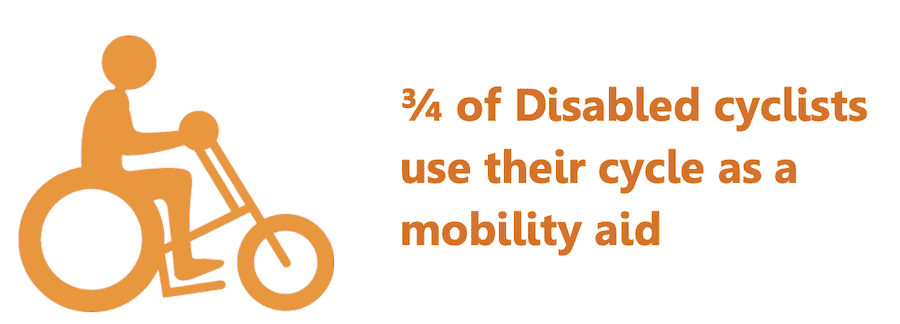
It’s important to note that everyone is different – and disabled people are no exception to this. Some disabled people may be able to ride a readily-available two-wheeled bike and have a similar experience getting around as abled people. But people who need (or prefer) to ride a non-standard cycle – such as a trike, wheelchair bike, reclining cycle, hand cycle, bike with trailer, or a bike specially adapted to suit their requirements – are likely to experience many more barriers getting from A to B.
Taking a leaf from the Aotearoa Disability Strategy, our vision is that we can all work together to create a non-disabling, accessible and safe cycle network. So, what are the barriers and what are the solutions?
Trialing the bikes!
Imagine being bike-curious but you can’t even find a bike to try in the first place! Currently, the biggest providers for trikes and adaptive cycles in Aotearoa are in the South Island. This distance barrier (and the time and cost that goes with it) means that only the most determined people will attempt to find a bike which works for them. There are many more people who are curious or interested in trying a bike, but who won’t be able to travel to the South Island to give it a go.
To help reduce this barrier, #AdaptMTB hold Give it a Go days in the Rotorua Redwoods for people of all abilities to try adaptive mountain biking. They have some beautiful stories and experiences.
For riding in urban environments, earlier this year Bike Auckland partnered with Grab Your Wheels to run a TryaCycle event series modelled off of #AdaptMTB’s Give it a Go days. We received funding from Waka Kotahi’s Innovation Fund, Hoe ki angitū, and were lucky to borrow various types of bikes – and a few trailers – from a range of organisations including Disability Sport Auckland, the Auckland Whānau Special Needs Support Group, Medix21, Bikes n Trikes Hamilton, Beachwheels NZ, Cycling Without Age, and the Electric Bike Team.
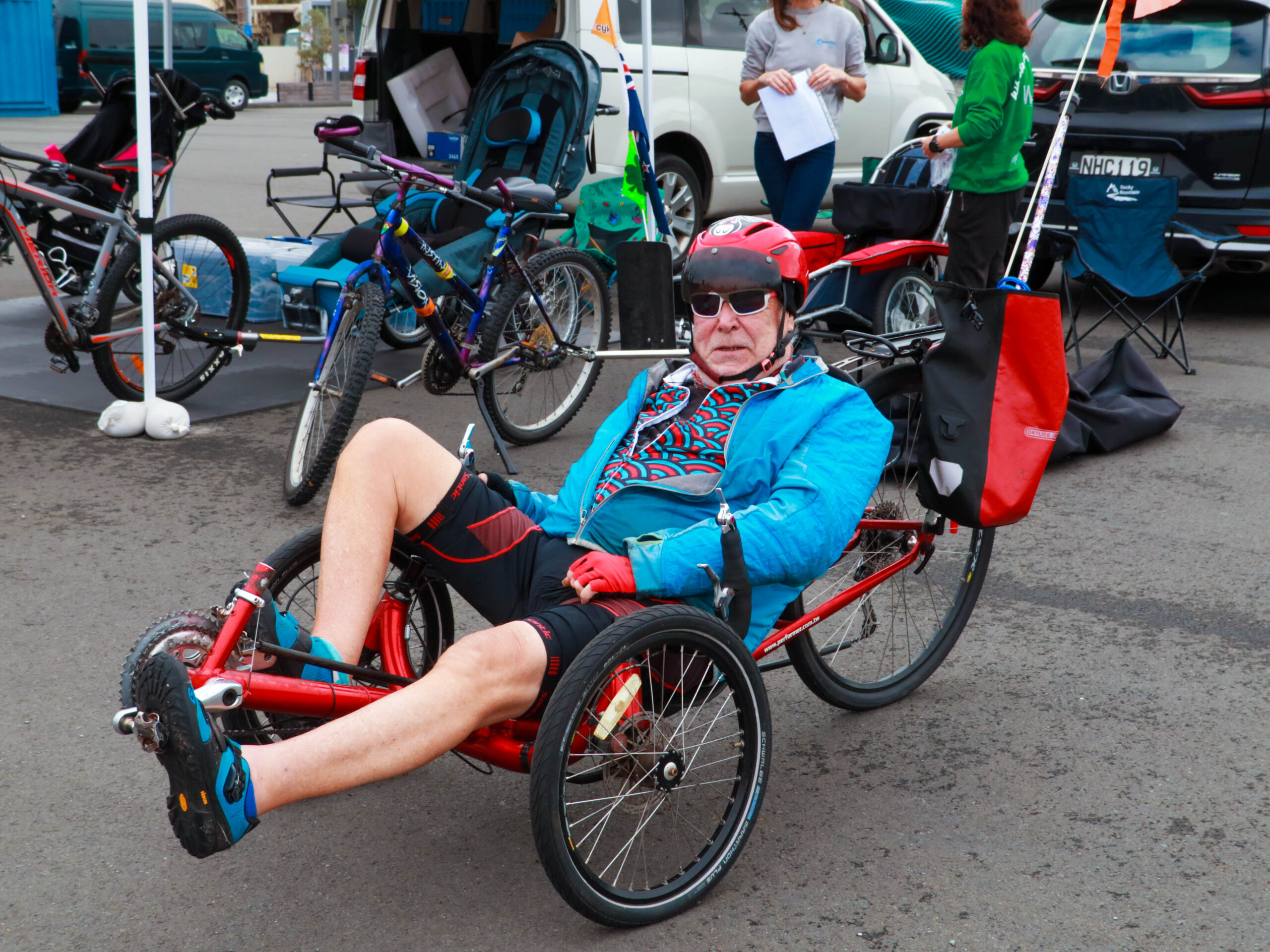
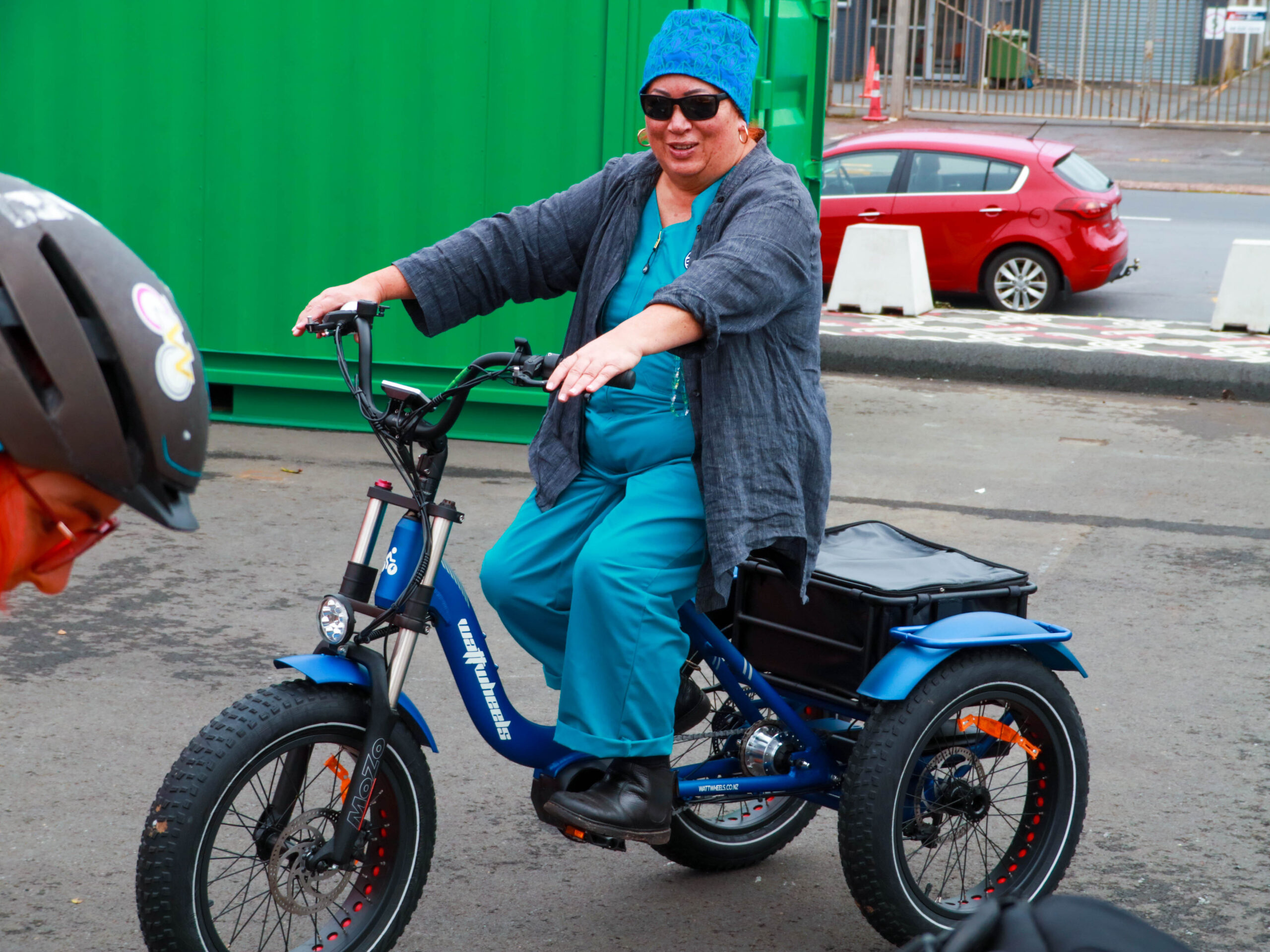
Many of the participants told us it was their first time riding a bike, and they hadn’t been sure if they would be able to. They were super happy to see that with the right bike cycling was an option for them! Some children initially seemed afraid trying out the trikes, but quickly became exuberant and confident as they realised their balance difficulties weren’t a danger on this type of bike, their parents eyes filled with tears of joy. You can see Maddy find the perfect bike for her in this heartwarming video from Attitude TV. Skip to 18.44 to see her ride a Trike at one of our TryaCycle events.
It was a beautiful experience and we’ll definitely be aiming to do it again!
Cost!
Many of the cycles which work for people with disabilities are expensive, and sometimes the bikes need to be further adapted or brought in from overseas which can be even more expensive.
Although there is sometimes funding available it is a complicated process and relies on many qualifying factors like age and nature of injury. Trikes NZ has a great list of where you can get funding here.
Narrow spaces
For a trike, bike with trailer, or even some cargo bikes, sometimes our current protected cycleways are too narrow. Sometimes the bike can fit in them but it feels very tight, which can make the rider uncomfortable – particularly if they are new to riding. Even the newer 1.5 metre cycleways (eg. Karangahape Road cycleway) can feel like a squeeze for trikes. A 1.8 metre – or wider – path would feel more comfortable for a more diverse range of bikes. It’s important to note that the Auckland Cycle Infrastructure design guide identifies 2 metres as the correct width for a uni-directional (one way) cycle lane, and 1.5 metres is listed as the absolute minimum.
Physical things on the road space, such as drains and road works signs, can make the cycleways even narrower, sometimes making them completely inaccessible. Care should be taken to ensure that drains are covered and level with the road surface so that they won’t become an obstacle, and we’re always pushing for road works signs to be better positioned!

Bollards and Staples
These physical barriers are often installed by default to keep cars and motorcycles off shared paths and trails but they can also exclude people who use wheelchairs, mobility scooters, wider bikes like trikes, and parents with pushchairs.
Many accessibility advocates suggest that we should install the pathway without a bollard and wait to see if motorbikes and cars will drive along the path. If they do, a bollard can be installed, making sure to give plenty of room for access for people who use wheelchairs, mobility scooters, wider bikes like trikes, and parents with pushchairs.
If bollards are required they should ideally be spaced 1.8 to 2 metres apart (note: some small cars can enter if it’s 2m). If space is constrained, the absolute minimum spacing for bollards is 1.5 metres.
If staples are installed, they should have a wide gap between them to allow for the wider turning circle and length of reclining bikes, cargo bikes, and trikes. But, it’s better to just stick with bollards instead!
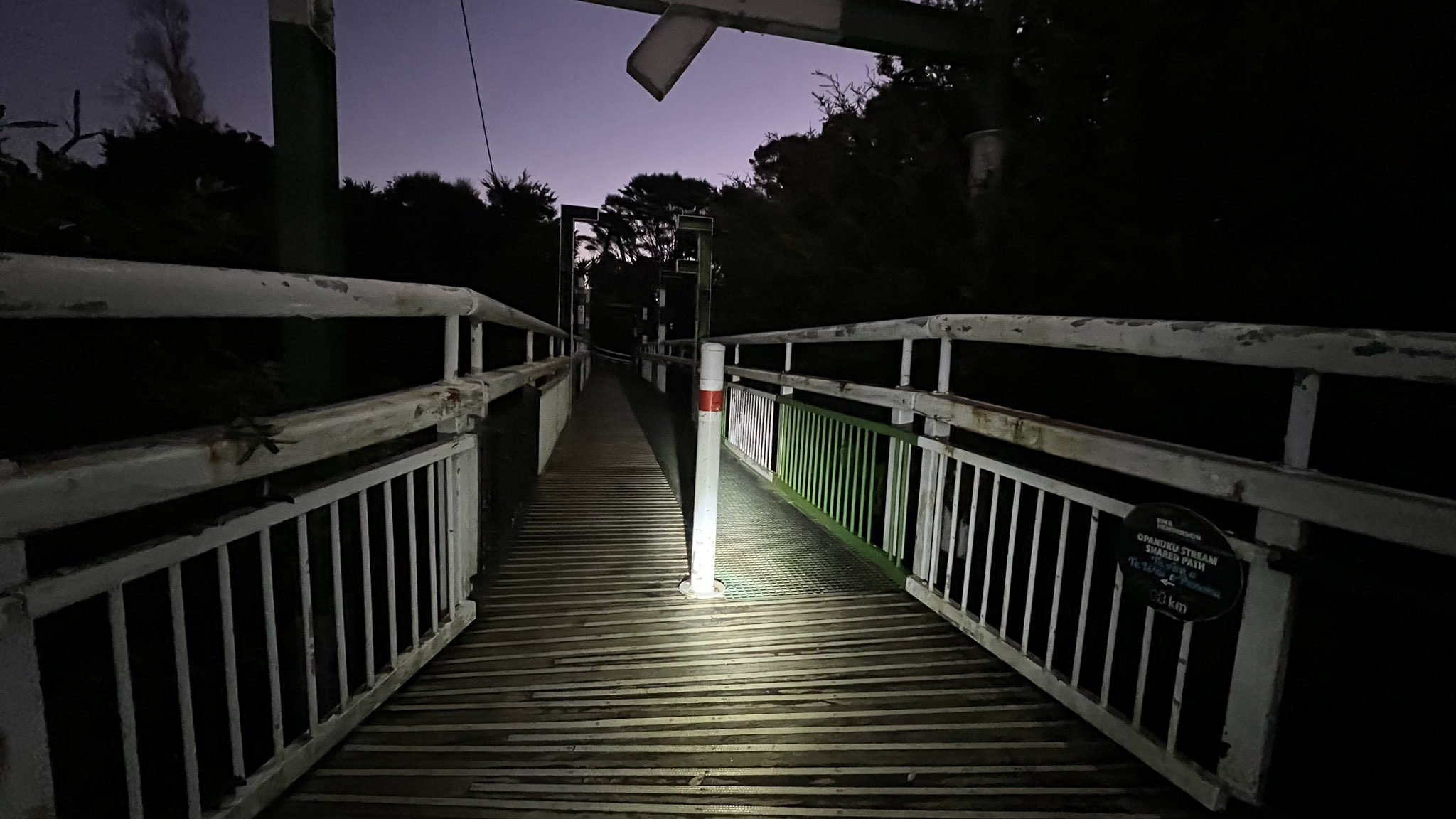
In the UK they have been removing barriers from the national cycling network and have found that overall it’s become safer without bollards and staples.
Here in Tāmaki Makaurau Auckland, even with bollards and staples in place we still have issues of motorcycles using some of our shared paths, which can make them dangerous spaces for people walking, cycling, and wheeling.
Instead of putting in bollards we could use cameras and double down on enforcement. However, currently Auckland Transport struggles to even enforce people parking in the wrong location (such as the footpath), so we probably aren’t equipped for a strategy like this.
We continue to search for a solution to enable cycleways and shared paths to remain accessible for a much wider range of users while also being safe from motor vehicles.
Kerb cuts
People who use pushchairs, wheelchairs, mobility scooters and bikes all share the need for more kerb cuts. A kerb cut is the little ramp that connects the footpath to the road. These are really important for giving people safe access to where they need to go; a lack of kerb cuts, or a misplaced kerb cut can cause people to be stranded on the road, potentially leaving them in a dangerous situation.
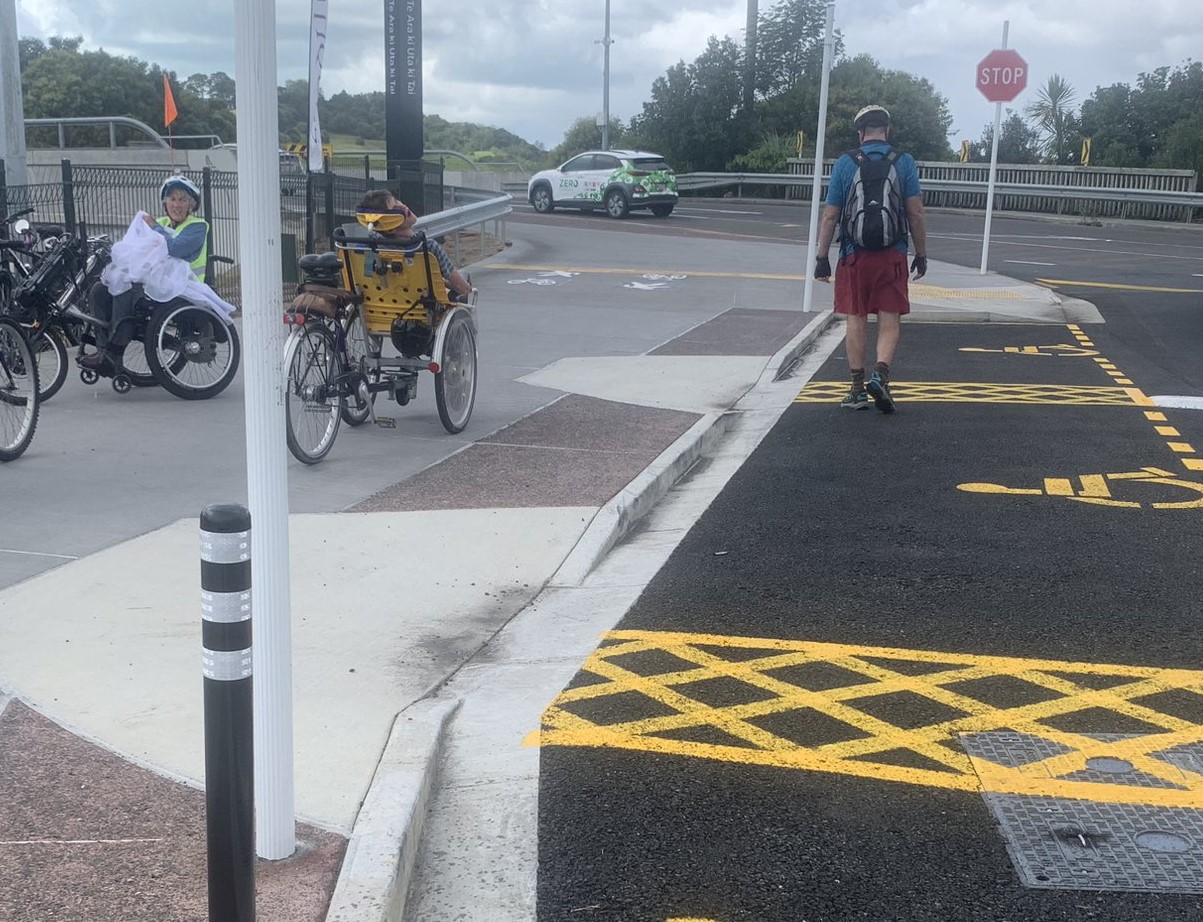
Photo supplied by Kimberly Graham.
Sharp turns
Sharp turns can cause some bikes to tip over, especially if taken at speed. Trikes, and longer bikes such as wheelchair bikes are particularly susceptible to tipping due to sudden sharp turns. A camber (sideways slope) in the path can make tipping even more likely.
Kimberly (Grab Your Wheels) and her son had a scary experience when their wheelchair bike tipped over due to a sharp turn in the Quay street cycleway, where it moves from the road onto the footpath. Luckily they weren’t hurt, but Kimberly had to pick up her 19 year old son and put him back onto the wheelchair bike by herself – a very impressive feat!
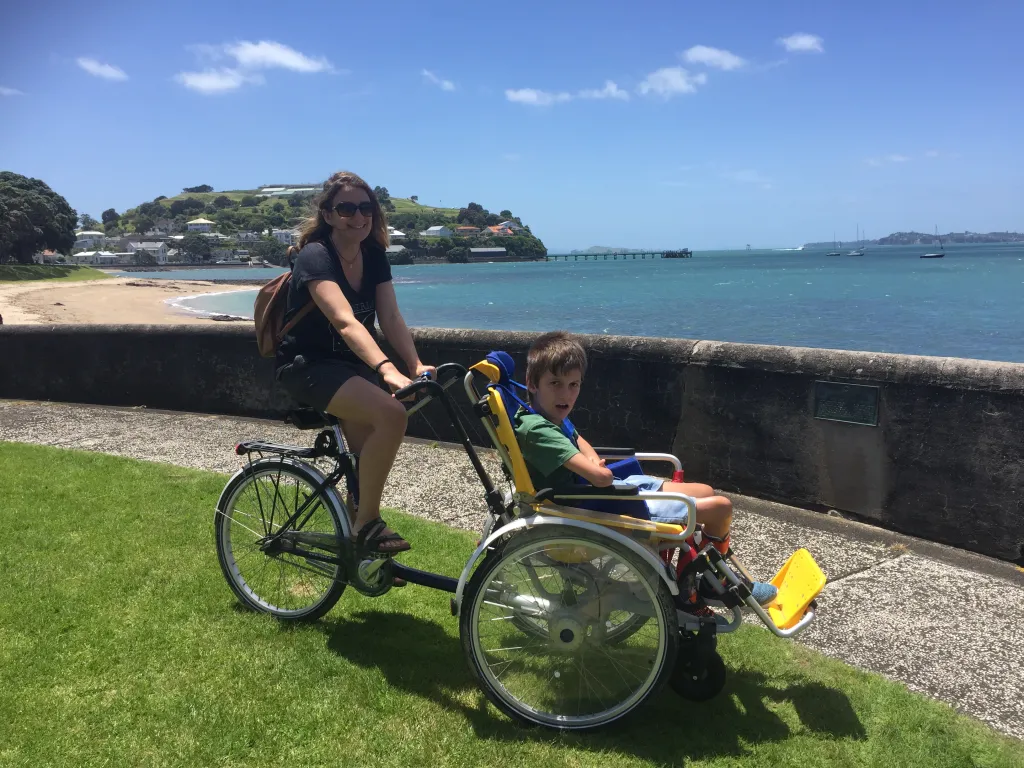
This is the sort of experience which can put people off from cycling altogether. We’ve been advocating to Auckland Transport to fix this corner so that the cycleway will be accessible for a wider range of bikes.

Steepness
Tāmaki Makaurau Auckland is hilly! For some people this is a fun challenge, and for others it is an obstacle to riding a bike – unless it’s an electric one. This is the same for disabled riders; some love the challenge and have built their fitness to tackle these hills, others require electric assistance in order to be able to navigate them. Some of the really hilly areas are too steep for some types of bikes, even with electric assistance! This can be a big problem for people who aren’t able to get off and walk the bike up the hill instead!
In Grafton Gully there is a short steep section where it connects to Upper Queen Street which at its steepest is grade 7.4% (according to Strava). This is too steep for some bikes, even with e-assist. For some electric devices which attach onto wheelchairs, such as Sharon’s Shazam, Grafton Gully’s steepest section is too much, and they cannot make it up.
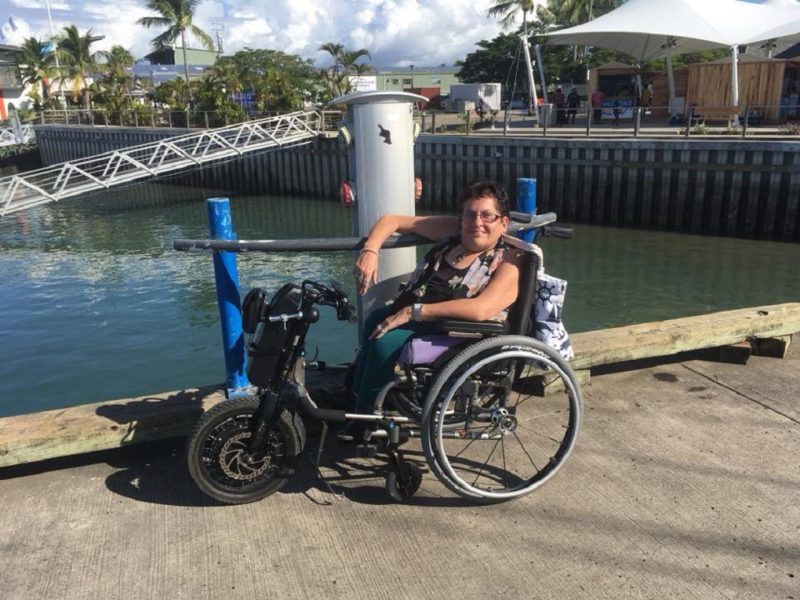
Luckily, at its steepest the Auckland Harbour Bridge has a 5% gradient which is very manageable for most people and e-assist devices. Liberating the lane on the Auckland Harbour Bridge for walking, cycling and wheeling would give safe access across Te Waitematā for everyone.
“Dismount Please”
Some of our cycleways include instructions to dismount and walk a portion of the pathway. Some disabled riders will be strapped into their bikes when they ride, and aren’t able to get off their bikes and walk them, even if it’s a short distance. Even those who aren’t strapped in may find dismounting and walking difficult. Our Chief Biking Officer Fiáin d’Leafy says that when their joints are in a flare-up they use their bike as a mobility aid and walking and pushing the bike can be too painful. While in most cases they can choose to ignore any dismount signs and continue to ride through, some people will not be comfortable with that and instead won’t feel like they can continue their journey. The pathways are sometimes more narrow in these sections too, which may make it hard for some of the wider bikes to fit through. If people do cycle through it can create tension with pedestrians using the path who do not understand why they haven’t dismounted.
In Fiáin’s view, areas which expect cyclists to dismount are ablest. They rely on the assumption that all cyclists are able to dismount the bike and able to walk, and they do not take into account that some people are using bikes as mobility aids.
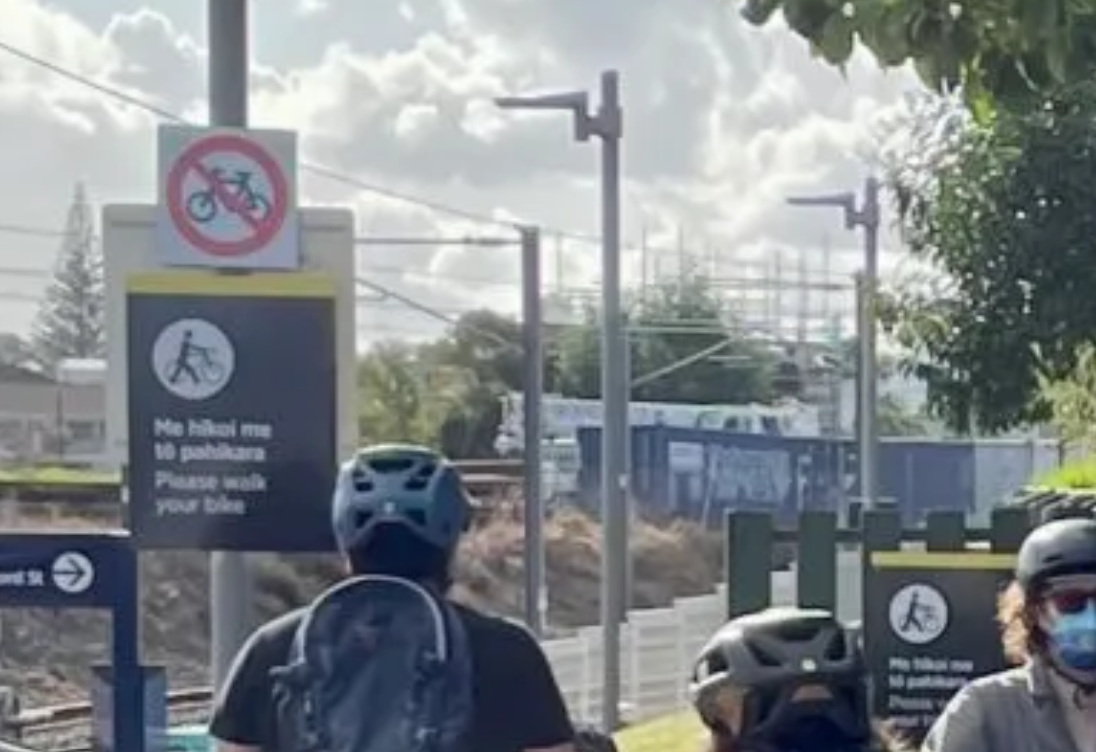
Bike Parking
Because accessible bikes can be expensive, and often have a lot of time, effort, and extra cost put into them to adapt them to suit, bike security is particularly important. However, many cycle parks only cater for two wheeled bikes. The double decker bike parking in Te Komititanga for example, is specifically designed for two wheeled bikes. “Wheel bender” style bike parking can be difficult for some bike types to lock to as well. A mixture of bike parking should be provided for security for a range of bike types.
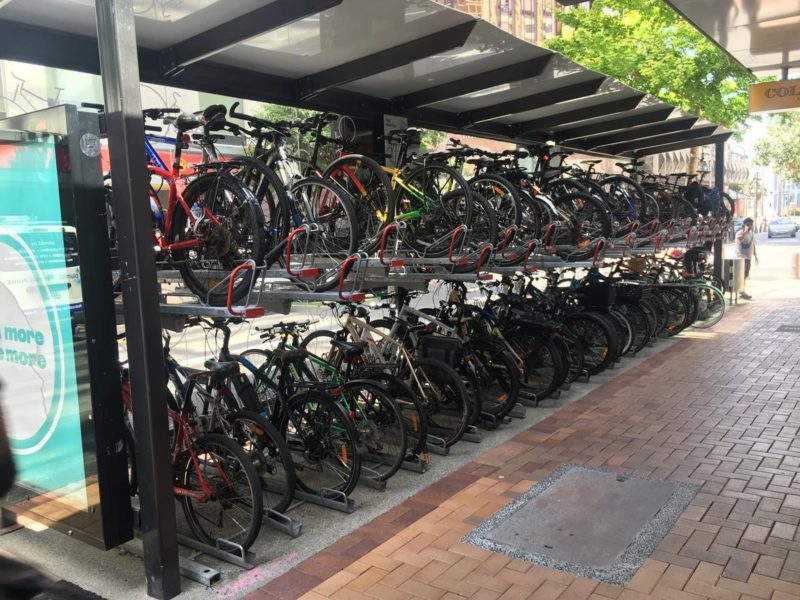
In general, if bike parking works for a cargo bike then it is probably accessible for most bikes. Staple-style bike parking, when spaced far enough apart, is a very accessible design. Parking spaces should be a minimum space of 1 metre wide, with some wider spaces of at least 1.5 metres provided for wider cycles. This gives room for trikes (and their riders) to fit. Wheels for Wellbeing has some great tips for inclusive cycle parking here.
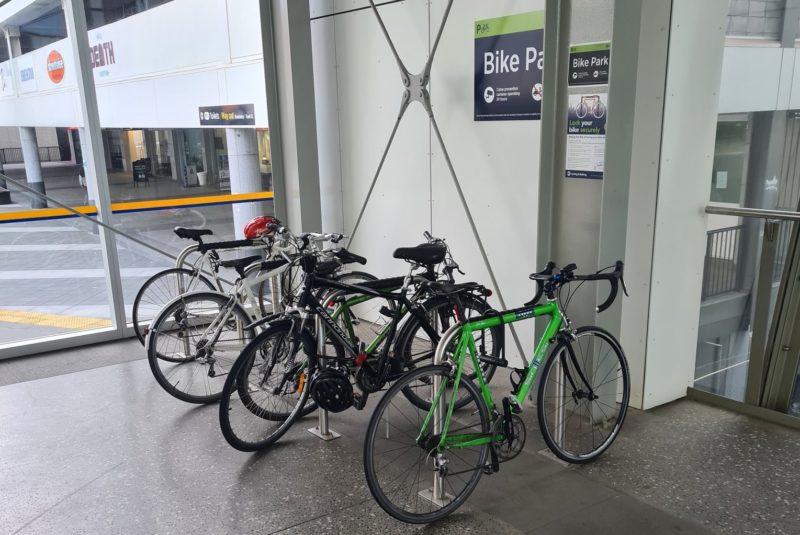
Many riders who use wheelchairs are unable to get out of their bike unless they have a chair to transfer into. This can present a barrier to cycling for their commute, unless they are able to have a second wheelchair ready for them in a convenient and accessible location at their workplace. Companies can make their workplace more accessible by ensuring that their bike parking is able to be accessed and used by a range of different types of bikes. This would mean ensuring that entrances and corridors leading to the bike parking can be navigated easily in a wider, longer cycle, ensuring that there is space in the bike parking area for someone in a wheelchair and bike to navigate, and that after-trip facilities (like showers) are accessible.
Similarly, recreational cycling routes can be more accessible if they include public toilets which are designed to be accessible for disabled cyclists.
Public Transport
Many of the ferry on-ramps are narrow, which is difficult to navigate with a standard two wheeled bike, let alone a wider one. Kimberly has found she sometimes has to take her wheelchair bike fully apart in order to get onto the ferry.
On the ferry, there are often no spaces for bikes (or even wheelchairs!) so they end up sitting outside where it gets very cold due to the wind and sea spray. Read about one of Kimberly and Finlay’s more accessible ferry adventures here.
The newer ferry terminals in Britomart have wider access ramps which are fantastic, but they are only used for specific ferry journeys. We have heard good things about the new incoming electric ferries in terms of boarding, bike capacity, and accessibility for wheelchair users – watch this space!

Some pathways to and from the train stations are not accessible for wheelchairs, wider bikes, and some devices. Being unable to get to or from the train station can be very disheartening and put people off from using public transport for their journeys.
At the train stations themselves people with bikes or using mobility devices are often reliant on lifts. However, sometimes the lifts are out of order and lifts at some stations are too small for bikes. People who can’t carry their bike up the stairs or escalator face great difficulty in these situations. They are forced to either take the train to the next accessible station and try to navigate back to their destination from there – or, to return home instead, unable to complete their journey.
Auckland Transport are aware of this, and are aiming to give clearer information about which train routes and stations are accessible so that people can make decisions in advance of their journey.
Of course, accessibility on buses is also a problem – for bikes as well as people who use mobility aids. Bike Auckland continues to advocate for buses to carry cycles as part of their regular service, with an emphasis that train-replacement buses are not a true replacement service if they cannot take bikes. The most inclusive option would be to purchase or design a new bus with ample space on the inside for mobility devices and bikes, as well as wide doorways for ease of entry and exit.
Cycleway design
Sometimes there are errors in the way cycleways are built which can conflict with accessibility for other disabled people, like the Karangahape cycleway.
Karangahape road cycleway, as much as we love it, has problems with its mobility parking. When a mobility van is parked in the disabled car park space it unloads by lowering a platform from the rear of the van. This platform inadvertently blocks the gap in the cycleway protection which the wheelchair is supposed to move through to reach the footpath. This means to get onto the footpath the person using a wheelchair would have to be unloaded onto the road and wait while the van raised its platform out of the way again before they could safely move through the gap and onto the footpath. This is a flaw in the mobility parking design. The parking space needs to be longer and with clear marking to make sure the access to the footpath is not obstructed.

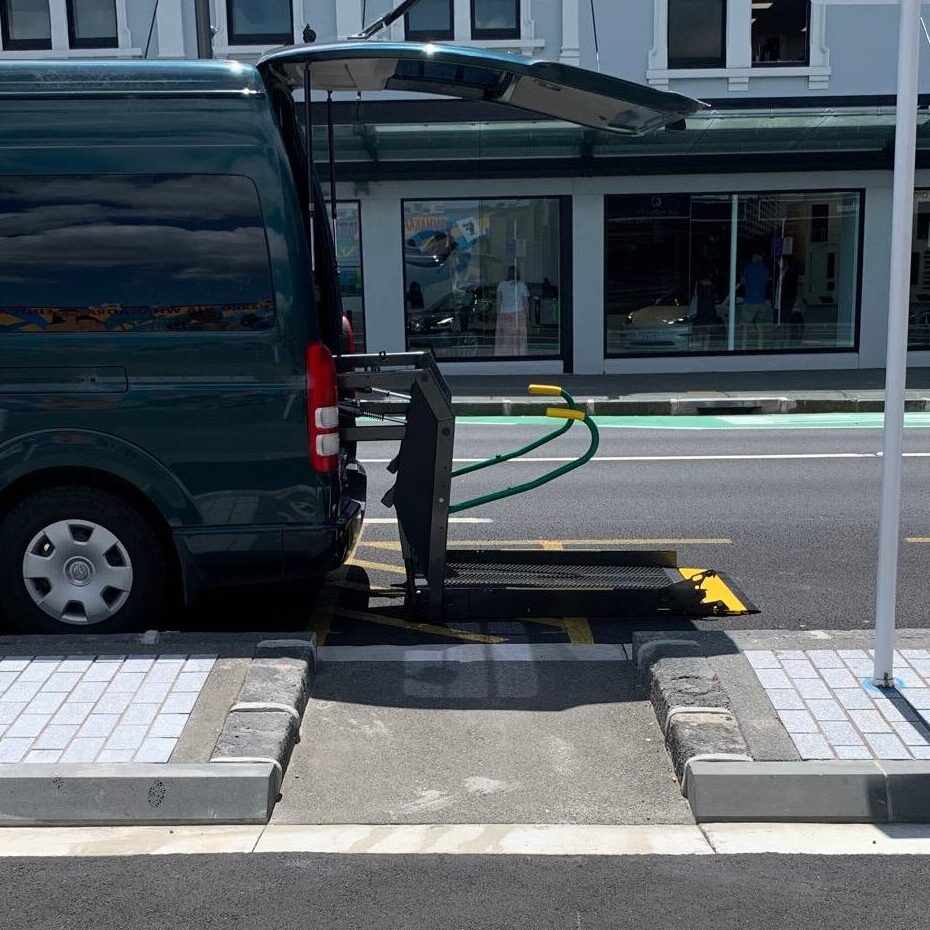
With Karangahape road, disabled people were consulted as part of its design. However, it’s possible that, once their input was incorporated into the design, input was received from other stakeholders which changed the design again. It’s important that once the final design is reached, Auckland Transport refers back to the disabled community and makes sure that the design is still inclusive and accessible.
Is cycling ablest?
Cycling receives a lot of critique for being ablest, which is perhaps due to a misconception that it is all about recreation. When a cycleway is built in a way which obstructs accessibility for other people, it’s understandable why some people might decide that cycling infrastructure and advocacy is ablest. However, Fiáin points out that this viewpoint assumes that all cyclists are able-bodied, and that all disabled people use cars for their transport.
Cycling itself certainly isn’t ablest; bikes can enhance independence, mobility, and participation for some disabled people. Many physios recommend them to people as a way to rehabilitate from certain injuries.
There is a misperception that ensuring car access and disabled parking will mean accessibility for all disabled people, but this ignores the diversity of our disabled community. 1 in 4 New Zealanders have a disability. Some of these disabilities prevent people from being able to drive, but still allow them to cycle for transport. For example, some people who have ADD, some vision difficulty, seizures, or people taking certain medications.
24% of Aucklanders over 16 don’t have a restricted or full drivers license; and the amount that don’t drive is much higher. If we include children over the age of 5 we find that more than 30% of Aucklanders don’t drive. For some of these people, cycling for their transport can give them independence, freedom and increased mobility. Kimberly echoes this, saying that in recent times she has noticed more of a variety in riders, especially older people, and that e-bikes are a great assistance for them.
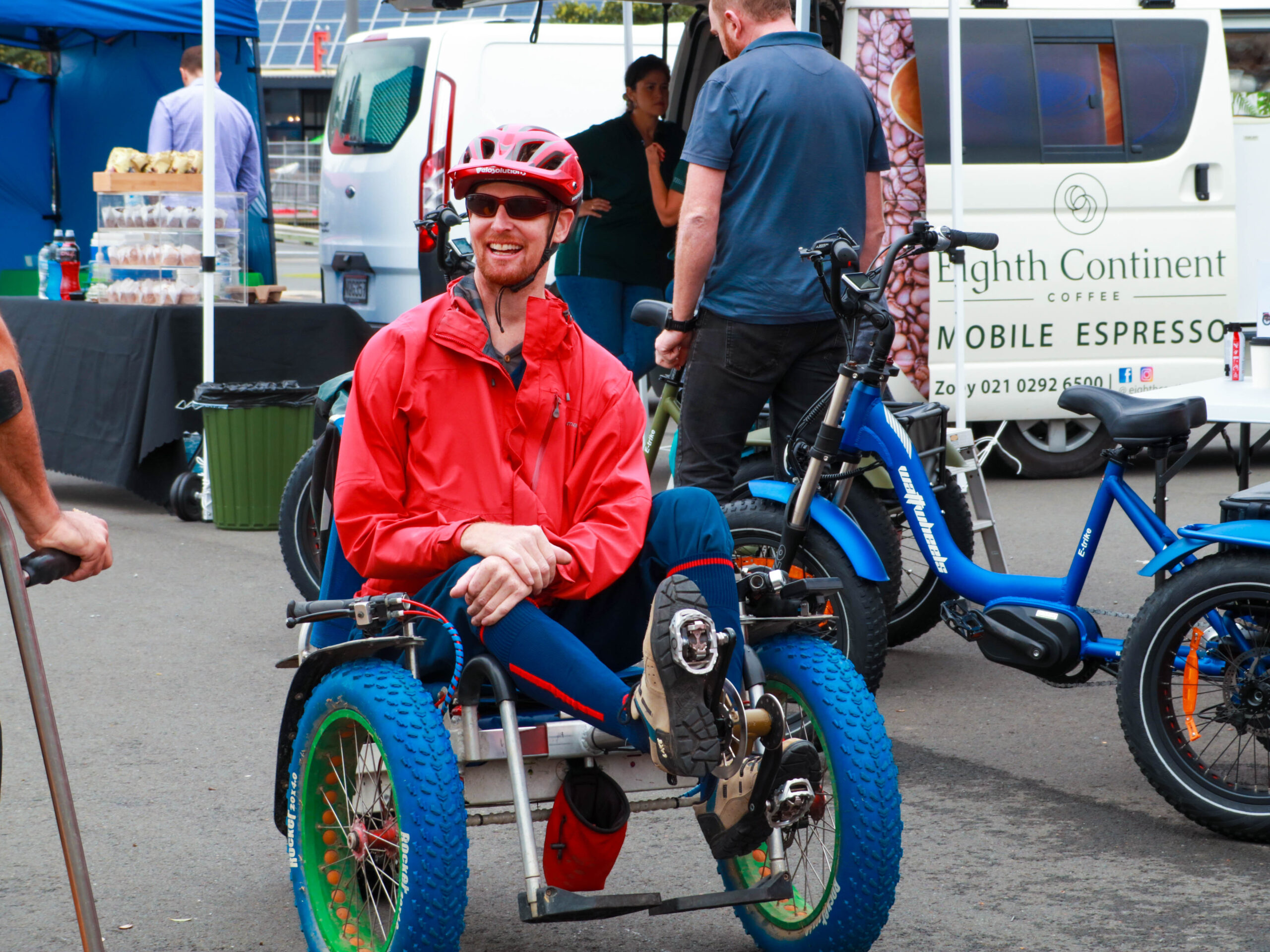
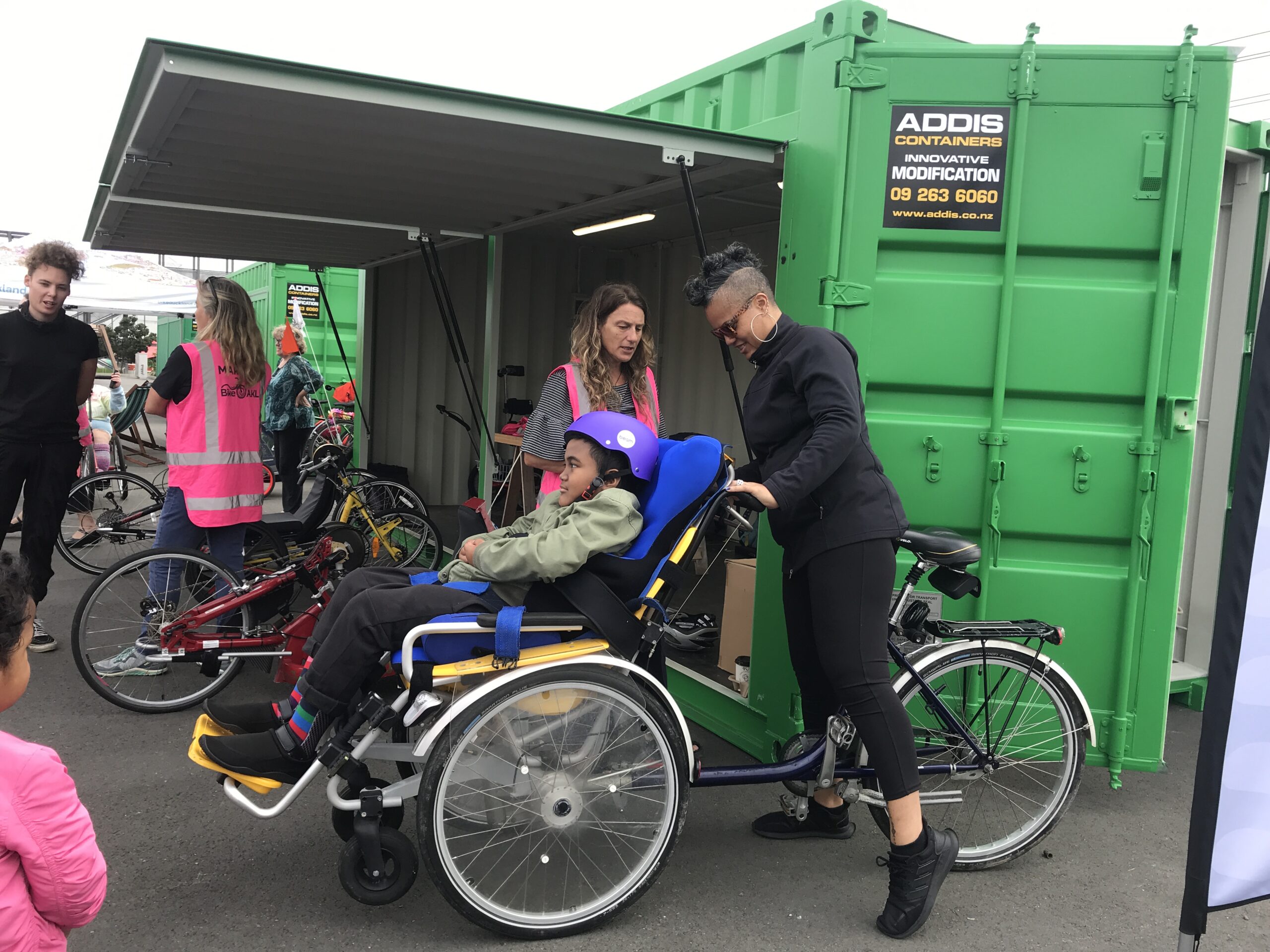
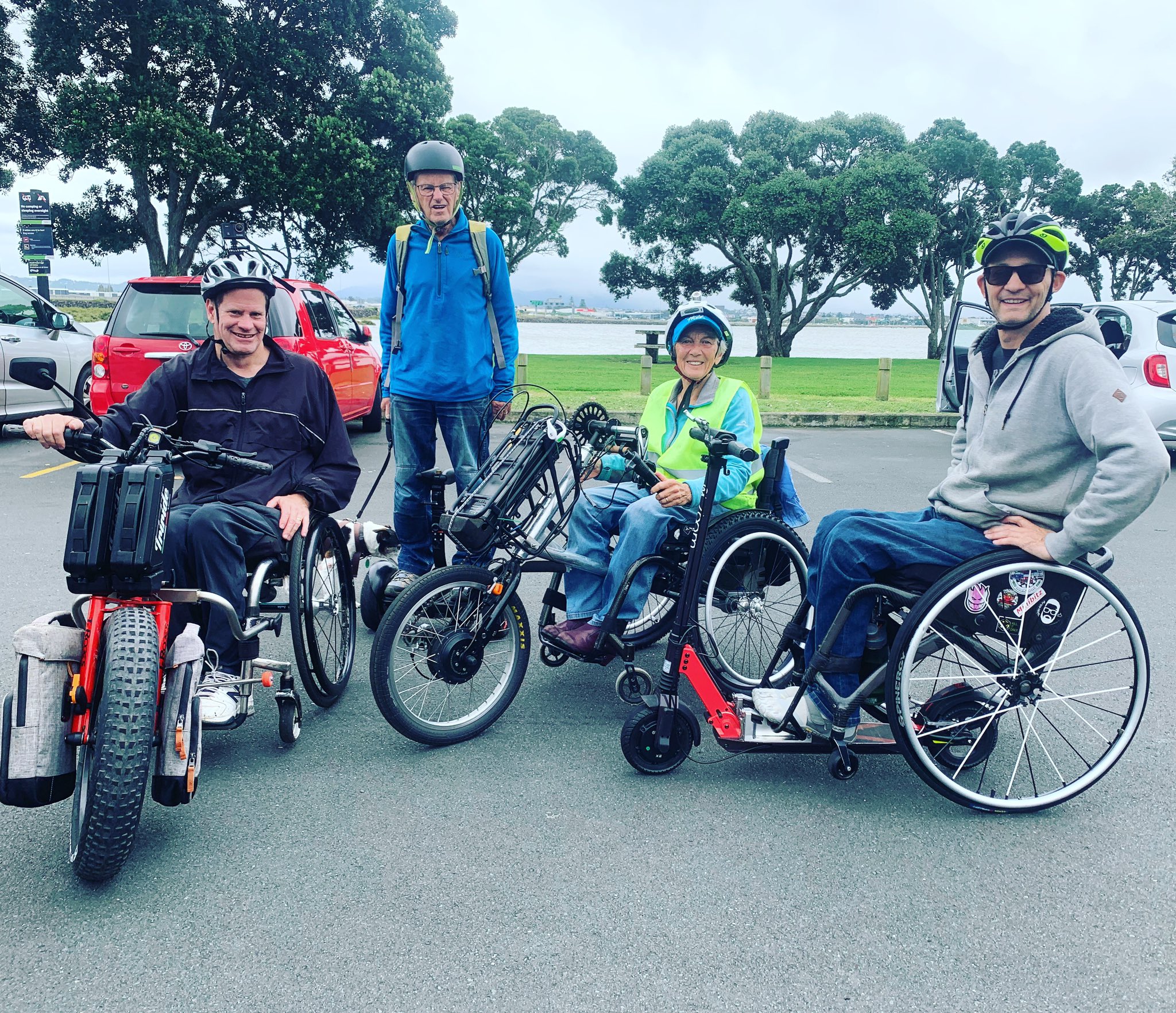
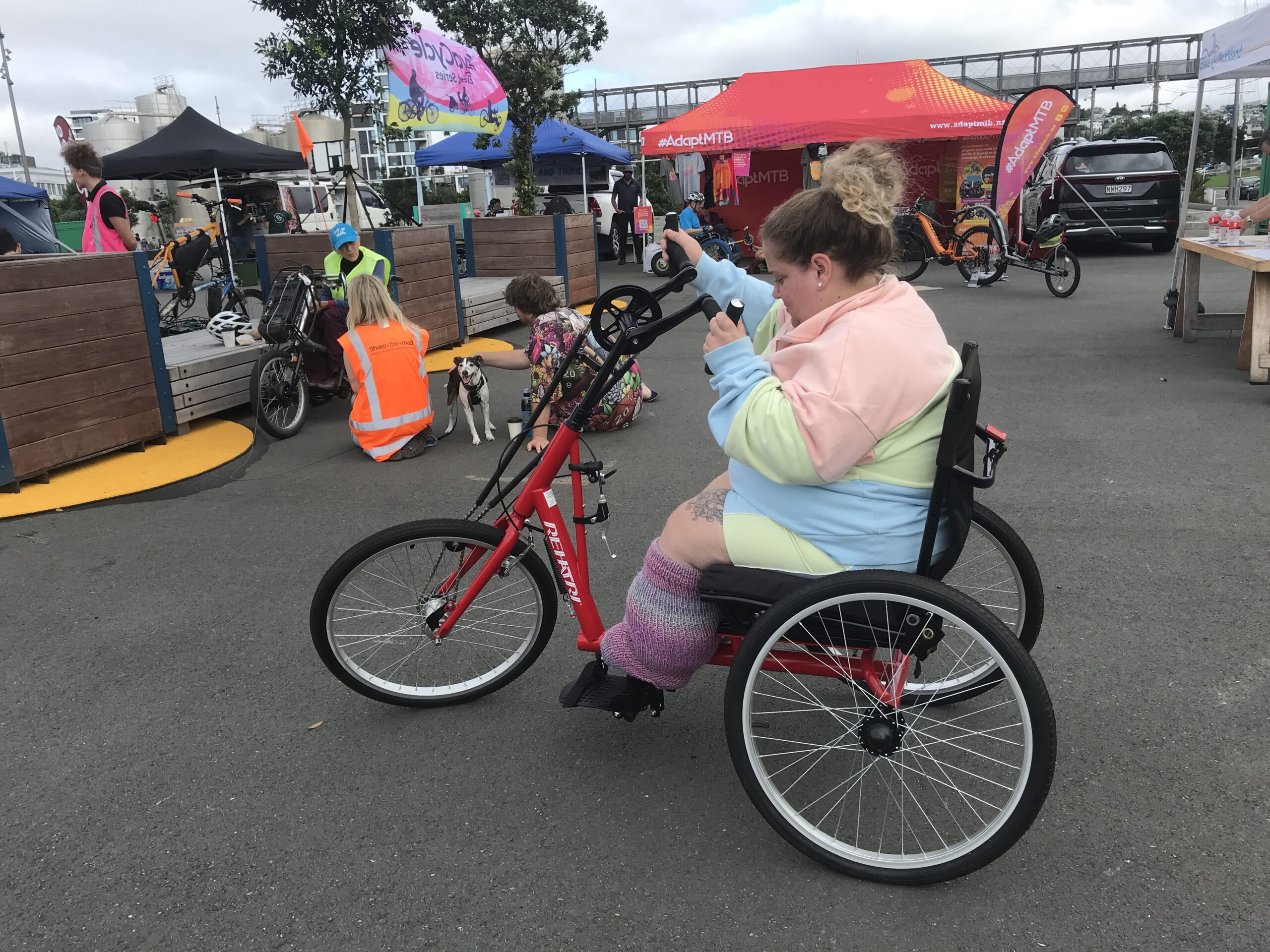
BUT! – and this is important – The way we talk about cycling can be ablest, and the way our cycleways are designed can exclude the types of bikes some disabled people ride. Many people when out riding bikes, like Emma, have had experiences of being harassed, both by fellow cyclists as well as by passing cars. James from #AdaptMTB has even been harassed while using his segway. This harassment is often coming from an ablest assumption – such as the throw-away “E-bikes are cheating”! We need a culture shift within our cycling community towards more inclusive and supportive discussion.
People who ride bikes, whether we experience mobility difficulties or not, have many accessibility difficulties in common with people who use wheelchairs and other mobility aids. We also want more kerb cuts, fewer staples, more space between bollards, and to be able to use buses as part of our journey. We have many opportunities to work together to advocate for more inclusive, accessible, and safer streets. Together we can create a more inclusive and accessible Tāmaki Makaurau Auckland.
Feeling your curiosity piqued? Want to read more? We strongly recommend you check out Wheels for Wellbeing UK’s Inclusive Cycling Guide which has been a great inspiration for us – You can read it on their website here.
You can also check out related write ups from us below.



